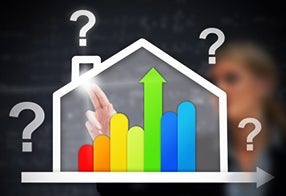 When most people think about energy, they see big power plants and smokestacks. What people generally do not consider is that it is much cheaper and more environmentally friendly to cut energy use than it is to build new power plants.
When most people think about energy, they see big power plants and smokestacks. What people generally do not consider is that it is much cheaper and more environmentally friendly to cut energy use than it is to build new power plants.
The problem is that saving energy is not simple. It requires changing deep-rooted behavior.
So, how can we encourage energy efficiency? Although it has always been a component of smart energy policy and economic development, recent concerns about securing sufficient energy resources to sustain growth (coupled with heightened concerns about energy prices and the environment) have made the issue front and center in many countries.
Historically, the Western Balkans (our focus group for the purpose of this post) have been very energy intensive – meaning they use more units of energy for maintaining their economies than other countries do. Because the winters can be harsh in this region, heating needs are substantial. Buildings – from multifamily apartment buildings to schools and shopping malls – account for about 40% of the energy needs and provide a huge opportunity to save energy.
A big challenge in changing consumer behavior and improving the efficiency of energy use lies in how energy is sold in these countries. Under the Soviet system they inherited, customers have traditionally paid for the heating of their homes based on how big their apartments are – not by how much heat they use. Many of these customers also have no way to control the temperature in their own apartments so they open windows to adjust the temperature! This leads to significant energy waste and electricity systems that can’t sustain themselves financially.
The World Bank is working on energy efficiency with governments in Balkan countries such as Macedonia, Serbia and Montenegro. In many cases, this means shifting from the old system to a more modern one. It also requires substantial investments, public awareness-raising, social safety nets for price increases and, above all else, political commitment. Political will can be particularly difficult – no one has ever won by campaigning for higher energy prices.
At a recent workshop in Vienna on energy efficiency in buildings, we discussed potential investments estimated at 3.6 billion Euros to renovate the building stock in these countries – but this would result in energy savings of 500 million Euros each year.
Most people agree that energy efficiency is a good thing, but people generally overlook simple measures like re-caulking their windows, unplugging large appliances when they’re not being used, or putting a rug or carpet on the floor.
When I had my air conditioning unit replaced in my house in northern Virginia, I asked the technician about the most efficient model. He said it was a SEER 19 (an energy efficiency rating, with a higher number being more efficient) but he advised against it saying that spare parts were not always available and some technicians didn’t know how to fix them. It was also more expensive than a standard model.
I knew the investment would pay off so I paid the premium for a more efficient appliance, but it was easy to see why many people would have selected the the conventional model. This is an example to illustrate that consumers—through their own awareness-raising efforts—can choose more energy-efficient solutions that will also save them money over the long-term.
Progress toward energy efficiency is going to require us all to think long-term – politicians and consumers. Unless we all start thinking differently about how we use energy, we may be staring at more smokestacks in the years to come.


Join the Conversation